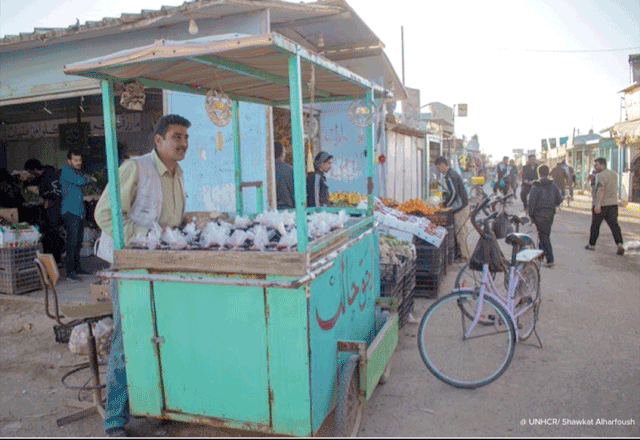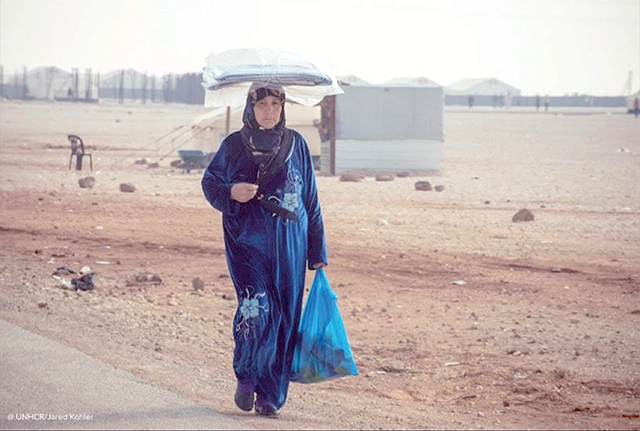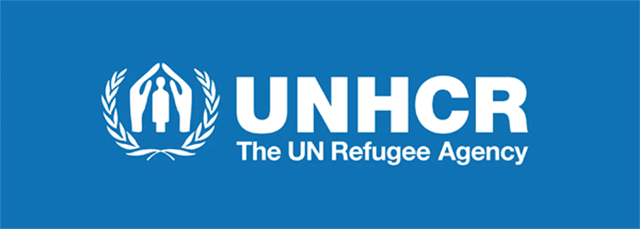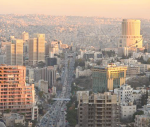You are here
UNHCR Jordan 2023 funding stands at 15%
By Mays Ibrahim Mustafa - Apr 08,2023 - Last updated at Apr 08,2023

The Jordan funding update issued by UNHCR, the UN Refugee Agency, shows that it has only obtained 15 per cent of its $390.1 million funding requirements for 2023 (Photo courtesy of UNHCR/Shewkat Alharfoush)
AMMAN — The Jordan funding update issued by UNHCR, the UN Refugee Agency, shows that it has only obtained 15 per cent of its $390.1 million funding requirements for 2023.
In the fourth quarter (Q4) of 2023, humanitarian assistance was the main source of income for non-Syrian refugees in host communities, accounting for 50 per cent of their total income followed by work, according to a UNHCR report issued in 2023.
For Syrian households in host communities, formal and informal work accounted for 45 per cent of their total income in Q4 of 2022 compared with 57 per cent in Q3, the report, titled Socio-economic situation of refugees in Jordan Q4 2022, stated.
It also pointed out that the average income for out-of-camp refugee households in Q4 stood at JD285, increasing by 19 per cent compared to Q3 “because of the winter assistance received in December 2022”.
Compared with Q3 of 2022, the average work income for refugees in host communities in Q4 decreased by 4 per cent for Syrian households, from JD213 to JD204, and increased by 5 per cent for non-Syrian households, from JD180 to JD188, it added.
The overall employment rate of refugees in host communities remained stable at 23 per cent, with a 6 per cent female labour force participation, according to the report.
It also showed that the employment rate of camp-based refugees was 24 per cent in Azraq and 23 per cent in Zaatari. However, only 11 per cent of women in Azraq and 8 per cent of women in Zaatari reported working.
Moreover, the average work income slightly decreased for camp-based refugee households in Q4 and assistance from the World Food Programme (WFP) represented their main source of income, 41 per cent, followed by work, the report said.
The average monthly income for households in Azraq and Zaatari camps stood at JD280 and JD300 respectively, increasing by over 20 per cent compared with Q3, also due to winter assistance, it noted.
However, during Q4 of 2022, refugee households in host communities spent on average JD290 per month, which is slightly more than what they earned, while households in refugee camps spent on average JD76 more than what they earned, the report added.
The majority of refugee households in camps and outside camps remained in debt in Q4 of 2022, it stated, noting that food and healthcare expenses were the main reasons for borrowing money.
According to UNHCR, the total average debt in Q4 was JD1,148 per household and JD295 per capita JD295 in host communities. In refugee camps, households’ total average debt was JD668 in Azraq and JD750 in Zaatari.
Related Articles
AMMAN — Ninety-three per cent of Syrian and 88 per cent of non-Syrian households in host communities are in debt, while over eight out of 10
AMMAN — Syrian refugee households in Jordan reported a decrease in their average monthly income in the first quarter (Q1) of 2023, according




















